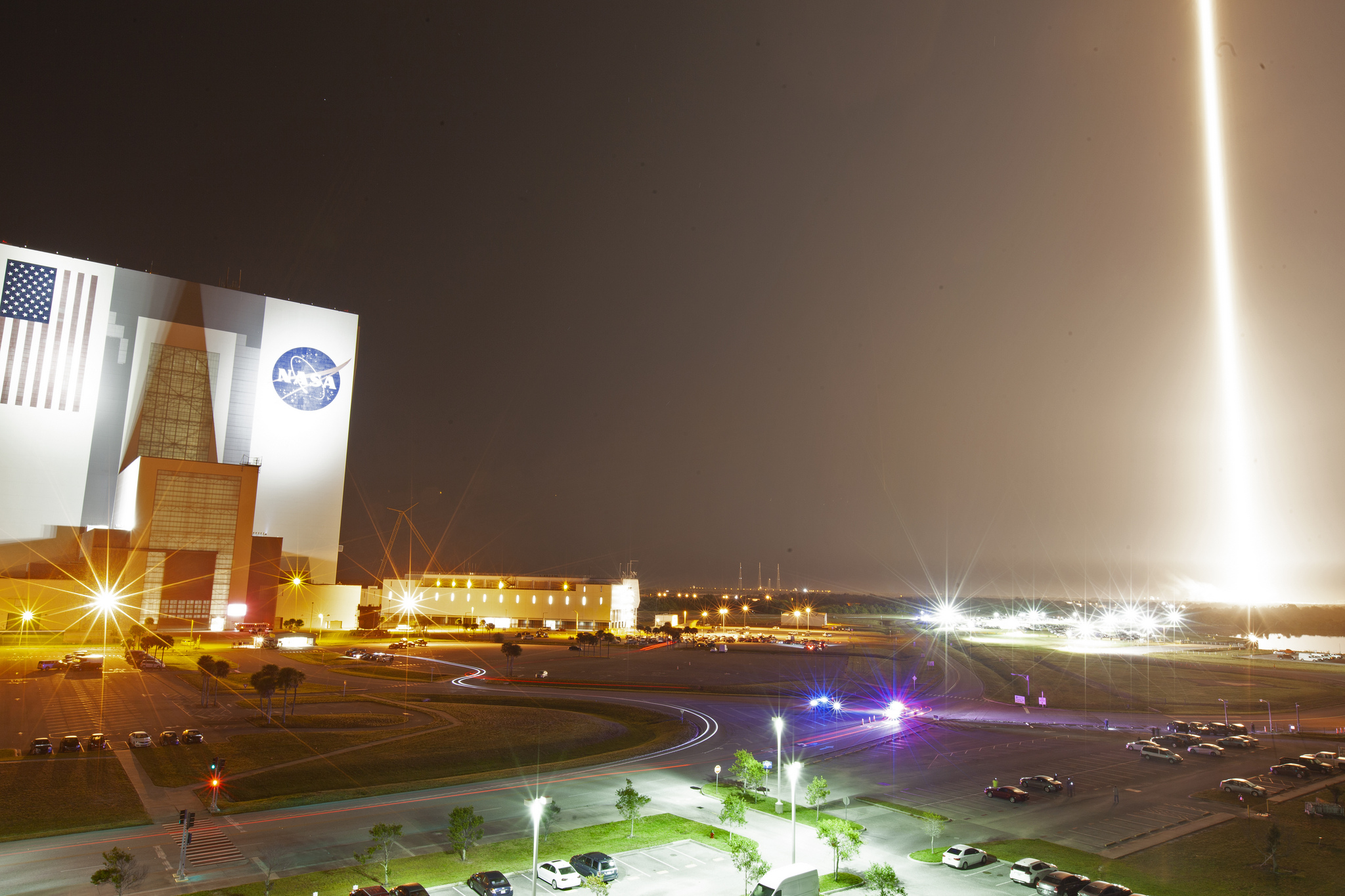CAPE CANAVERAL, Fla. — We may all have just lived through a spaceflight inflection point.
SpaceX's Crew Dragon capsule launched atop a Falcon 9 rocket from Pad 39A here at NASA's Kennedy Space Center (KSC) in the predawn darkness this morning (March 2), kicking off its maiden flight to the International Space Station.
"Tonight was a big night for the United States of America, a great night for NASA," NASA Administrator Jim Bridenstine said this morning during a post-launch press briefing here. "What today really represents is a new era in spaceflight."
The private spaceship isn't carrying any passengers on its 6-day mission, which is known as Demo-1. But a successful flight — fingers crossed — will help pave the way for crewed journeys to and from the orbiting lab aboard Crew Dragon, returning human spaceflight to American soil for the first time since the 2011 retirement of NASA's space shuttle fleet.
Related: SpaceX Dragon Crew Demo-1 Test Flight: Full Coverage

"This is a critically important event in American history," NASA Administrator Jim Bridenstine told reporters here at KSC yesterday (March 1).
Bigger things should eventually flow from this milestone, he stressed — namely, the creation of a robust marketplace in low-Earth orbit with multiple American spaceflight providers and multiple customers.
Get the Space.com Newsletter
Breaking space news, the latest updates on rocket launches, skywatching events and more!
"We're going to have more access to space at better cost than at any point in human history," Bridenstine said yesterday.
That capability, he added, will help NASA achieve its bold ambitions in deep space. The agency is working to return humans to the moon, but in a sustainable and cooperative fashion, rather than the go-it-alone, flags-and-footprints strategy of the Apollo era.
NASA aims to have a small moon-orbiting space station called the Gateway up and running by the middle of the next decade. This outpost will serve as a jumping-off point to the lunar surface for both uncrewed and crewed landers, the latter of which could start putting humans down by the end of the 2020s.
And the agency envisions the moon serving as a stepping-stone to Mars: NASA and its commercial and international partners will take what they learn from their work on and around Earth's nearest neighbor and apply it to the much tougher task of putting boots on the Red Planet, which NASA aims to do in the 2030s.
"We really have one exploration campaign, but we have three theaters: We have low-Earth orbit, we have the moon, and we have Mars," Bridenstine said. "The goal here is to fund the entire package."
Lowering costs in any — and hopefully all — of those theaters will help get that bigger job done, he added.
If everything goes according to plan, Crew Dragon will arrive at the orbiting lab early tomorrow morning (March 3), then stay docked for five days. Its shakeout cruise will end on Friday morning (March 8) with a splashdown in the Atlantic Ocean, off the Florida coast.
The capsule will then be prepped for a "high-altitude abort test," which will prove out its ability to get astronauts out of harm's way in the event of a launch emergency. (Crew Dragon has eight SuperDraco thrusters built into its body for this purpose.)
That second uncrewed test could happen as early as next month, SpaceX founder and CEO Elon Musk has said (though it's officially planned for June). SpaceX and NASA are targeting July for Demo-2, which will send two astronauts to the space station aboard Crew Dragon (but not the same individual capsule that's performing the first two tests).
Fully operational missions, each of which will ferry four people to the orbiting lab, will start sometime thereafter.
NASA awarded SpaceX a $2.6 billion contract in 2014 to do this work. The space agency also signed a similar, $4.2 billion deal with Boeing, which is developing a capsule called the CST-100 Starliner.
Starliner could fly its first uncrewed demonstration mission to the station as early as next month, NASA officials have said, and tote astronauts for the first time in August.
Mike Wall's book about the search for alien life, "Out There" (Grand Central Publishing, 2018; illustrated by Karl Tate) is out now. Follow him on Twitter @michaeldwall. Follow us on Twitter @Spacedotcom or Facebook.
Join our Space Forums to keep talking space on the latest missions, night sky and more! And if you have a news tip, correction or comment, let us know at: community@space.com.

Michael Wall is a Senior Space Writer with Space.com and joined the team in 2010. He primarily covers exoplanets, spaceflight and military space, but has been known to dabble in the space art beat. His book about the search for alien life, "Out There," was published on Nov. 13, 2018. Before becoming a science writer, Michael worked as a herpetologist and wildlife biologist. He has a Ph.D. in evolutionary biology from the University of Sydney, Australia, a bachelor's degree from the University of Arizona, and a graduate certificate in science writing from the University of California, Santa Cruz. To find out what his latest project is, you can follow Michael on Twitter.









